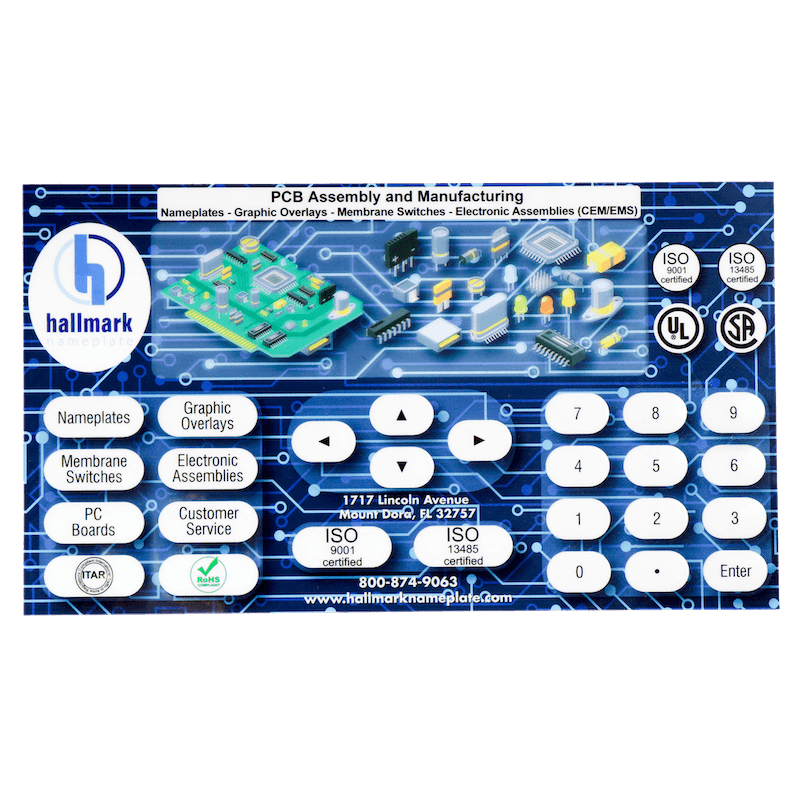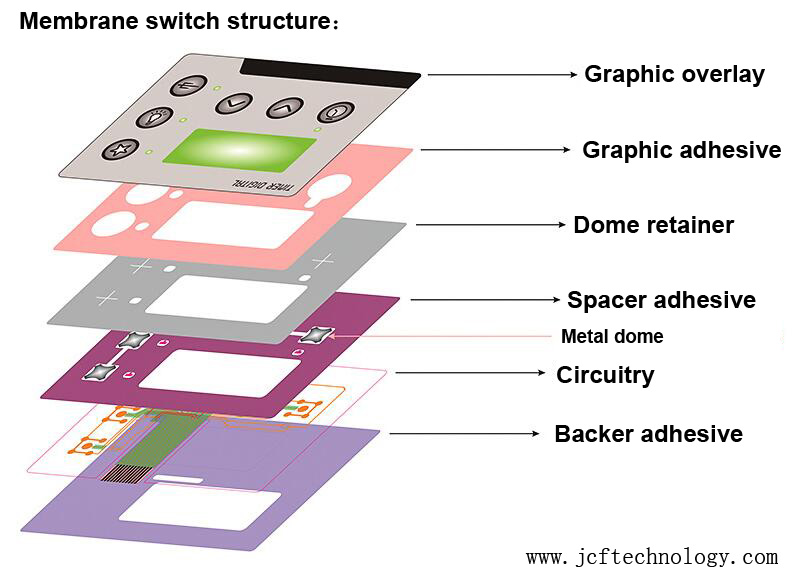Comprehending Membrane Layer Switches Over: The Key to Reliable and long lasting Controls

What Are Membrane Layer Switches?
Membrane buttons are a sophisticated solution in the world of individual interface technology, integrating performance and layout perfectly. These gadgets act as a user interface in between individuals and electronic systems, incorporating several components into a portable format. Typically constructed from flexible, thin layers of materials, membrane switches are made to reply to touch, allowing individuals to interact with equipment and electronic tools efficiently.
The main aspects of a membrane layer button include a published circuit layer, visuals overlay, and a spacer layer that avoids unexpected activation. The graphic overlay can be personalized to show brand name identification or individual preferences, enhancing looks while ensuring usability. Membrane layer switches are commonly utilized in different applications, consisting of medical devices, consumer electronics, and commercial tools, owing to their toughness and resistance to ecological factors such as moisture and dirt.
One of the vital advantages of membrane layer switches is their ability to hold up against damage, making them perfect for high-traffic settings. Furthermore, they are lightweight and need very little area, permitting innovative designs in product development. In general, membrane switches stand for a effective and sensible selection for modern-day digital user interfaces, weding innovation with user-centric layout concepts.
How Membrane Changes Work
The operation of membrane switches joints on a basic yet reliable system that equates individual input into digital signals. When a user presses the switch, the top layer warps, allowing a conductive component in the circuit layer to make call with an equivalent conductive pad on the underside of the visuals overlay.
The design of membrane switches can vary, however they usually integrate domes or tactile aspects to provide responses to the user, boosting the overall experience - membrane switch. The products used in membrane layer buttons, such as polyester or polycarbonate, add to their resilience and resistance to environmental aspects, including wetness and dirt. The printed circuits are normally enveloped, which protects them from wear and tear over time.
Advantages of Membrane Switches

In addition, membrane buttons are recognized for their resilience. Built from robust products, they are resistant to dust, dampness, and physical wear, which considerably prolongs their life expectancy contrasted to traditional mechanical switches. This sturdiness makes them specifically suitable for high-traffic atmospheres and applications requiring long life.
An additional significant advantage is the ease of cleansing and upkeep. The smooth surface of membrane changes minimizes dirt build-up and is often impervious to spills, making them optimal for setups that require frequent sanitization.
Furthermore, membrane layer switches offer a streamlined profile, leading to a thinner layout that can be incorporated right into numerous tools without adding mass. This feature not only boosts the aesthetic charm but likewise adds to a more ergonomic item design.
Applications of Membrane Switches
User-friendly and functional, membrane layer buttons locate applications throughout a variety of industries, consisting of clinical tools, customer electronics, and industrial devices. In the medical area, these switches are integral to tools such as analysis devices, individual surveillance systems, and mixture pumps, where reliability and ease of cleansing are important. Their ability to keep and stand up to harsh settings performance makes them excellent for such applications.

In consumer electronic devices, membrane pop over here buttons are utilized in products like microwaves, washing equipments, and remote controls - membrane switch. Their smooth design permits intuitive customer interfaces, boosting the total customer experience while offering longevity and resistance to deterioration
Industrial devices also gains from membrane switches, specifically in control panels for machinery and automation systems. These switches use protection versus dirt and dampness, making certain constant efficiency in difficult atmospheres. Furthermore, their adjustable features permit makers to customize them to specific functional needs, boosting efficiency and capability.
Picking the Right Membrane Layer Change
When choosing a membrane button, it is vital to think about different variables that influence performance and suitability for certain applications. The main considerations consist of ecological conditions, responsive feedback, longevity, and design specs.
First, analyze the operating environment; switches subjected to moisture, chemicals, or severe temperature levels need specific products to make sure durability and functionality. Next off, evaluate the requirement for responsive responses. Depending upon user interaction, some applications might great post to read benefit from a responsive reaction to confirm activation, while others may favor a non-tactile design for visual factors.
Toughness is another crucial aspect; membrane buttons need to be developed to withstand constant usage, influences, and abrasion. Guarantee the picked button can sustain the expected lifecycle, specifically in high-usage circumstances.
Verdict
Finally, membrane layer switches over serve as necessary elements in the style of resilient and trustworthy control systems throughout different industries. Their portable design, incorporated with durable construction and personalized features, boosts user communication while guaranteeing longevity in requiring settings. The versatility of membrane switches over allows for customized services that fulfill details functional requirements, reinforcing their significance in modern-day technology. As sectors remain to advance, the value of integrating efficient membrane switch solutions can not be overstated.
Membrane layer changes stand for a critical facet of contemporary user interface style, blending capability with strength in various applications.Membrane switches are an advanced solution in the realm of individual interface innovation, combining capability and design seamlessly. Commonly created from flexible, thin layers of products, membrane layer buttons are made to react to touch, allowing customers to connect with equipment and electronic gadgets successfully.
The style of membrane buttons can differ, however they typically incorporate domes or tactile aspects to provide go now feedback to the individual, improving the overall experience.In verdict, membrane layer switches over serve as vital parts in the layout of long lasting and trusted control systems across different sectors.